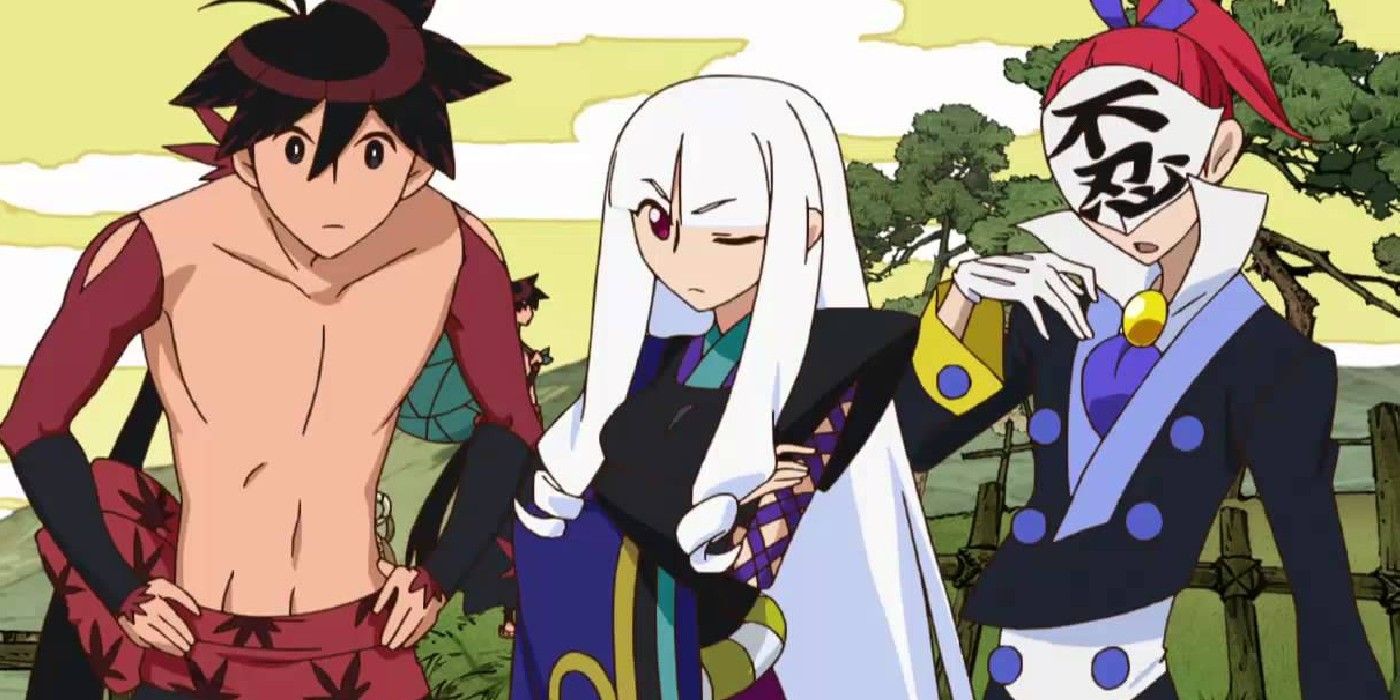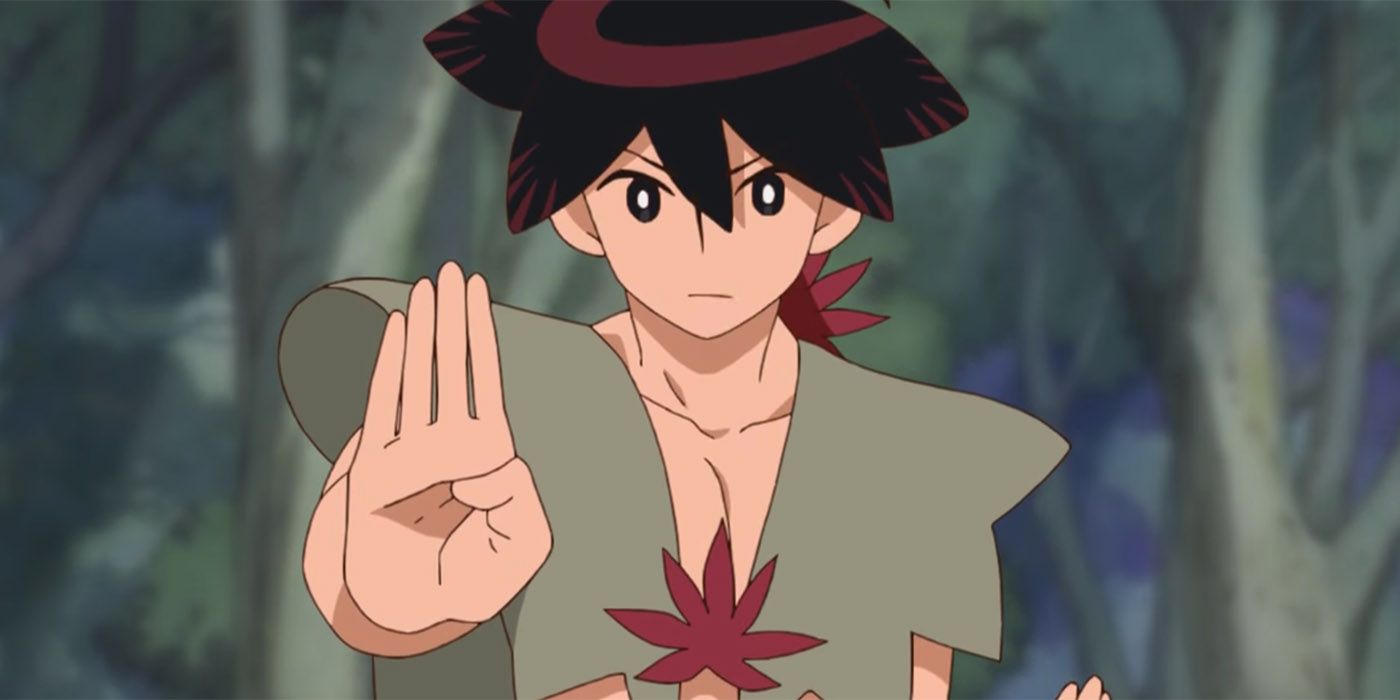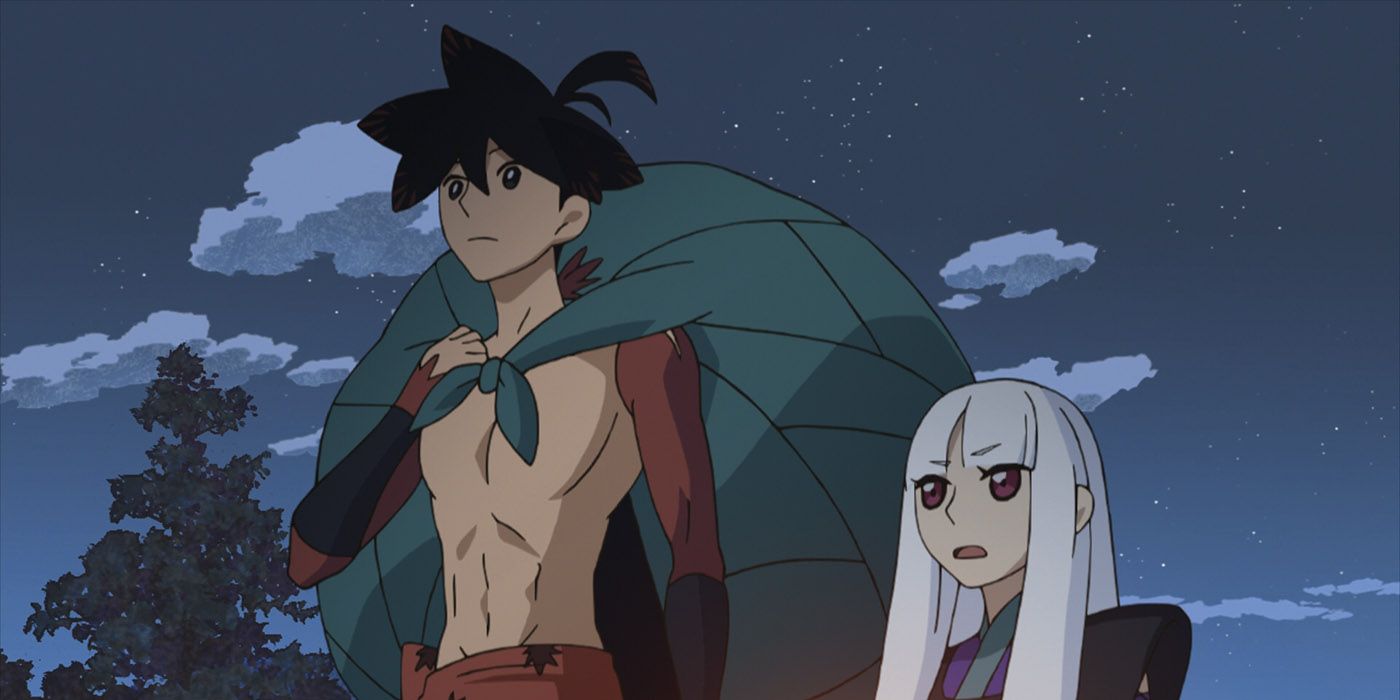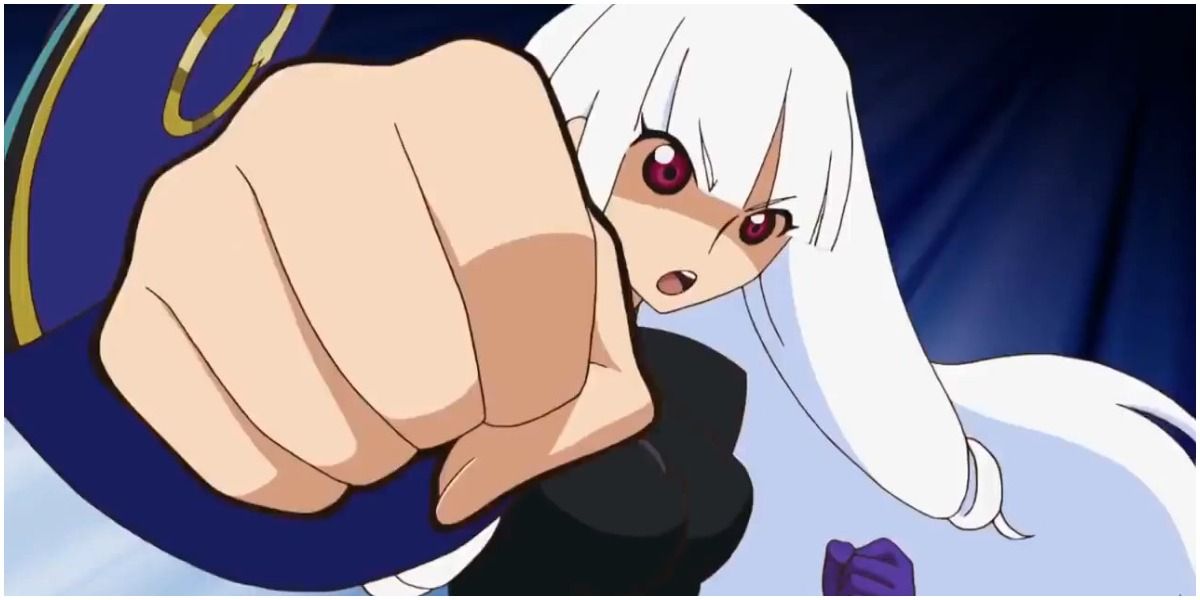Nisio Isin is a beloved writer most known for creating the massive Monogatari franchise. Monogatari started life as a light novel but didn't become a full-blown media juggernaut until Shaft made an anime adaptation of the series. However, this sprawling story isn't all Nisio Isin has done.
In fact, one of the prolific creator's other works, Katanagatari, is even better than Monogatari. Despite its high quality, Katanagatari is often overshadowed by Monogatari, meaning it is rarely mentioned or talked about by anime fans. Here's what it's all about and why Katanagatari deserves every Monogatari fan's attention.
What Is Nisio Isin's Katanagatari About?
Set in Edo-era Japan, Katanagatari follows a highly unusual swordsman named Yasuri Shichika. Unlike other fighters, Shichika fights without a sword; instead he utilizes Kyotouryuu, a powerful but tricky fighting style where the combatant uses their own body as a blade. Despite his incredible strength, Shichika prefers to live in isolation -- but his life totally changes when a strategist named Togame turns up at his door.
Togame explains she is trying to track down twelve magical swords called the Deviant Blades as she needs to return them to the shogunate. She needs Shichika's help because the Deviant Blades corrupt those who use them. However, as Shichika doesn't need a sword to fight, he should be immune to the Deviant Blades. So, this unlikely pair head out on an epic quest encountering many powerful foes as they travel and collect swords.
Why Is Katanagatari Better Than Monogatari?
One of the best things about Katanagatari is its visual style. Created by studio White Fox, Katanagatari stands out against other anime -- including Monogatari. The show features highly-stylized characters, vivid color palettes and aesthetically pleasing environments while constantly changing things to keep it fresh. Most episodes feature at least one segment that uses an alternative art style, from unusual transitions to unique sequences.
This gives Katanagatari a tremendously creative world, and this changing atmosphere helps capture the idea that the cast is exploring a vast and varied realm. While Monogatari also changed art styles and had some stylized elements, it didn't go as far as Katanagatari and wasn't as stylistically varied. Anime fans who loved Monogatari's art style will likely enjoy Katanagatari's even more.
Unlike Monogatari, Katanagatari has a smaller main cast and features longer unbroken stretches of dialogue, meaning viewers get more time to learn about and understand the characters and their personalities. Shichika is exceptionally complex, having a tangled emotional history that heavily informs his actions in the present, and this is perfectly revealed and explored as the series continues. This is in stark contrast to Monogatari, whose larger cast led to many potentially interesting characters not getting enough screen time, leaving them painfully unexplored. Katanagatari's more unique historical fantasy setting opens up even more varied scenarios and uses them to incredible effect, fleshing out and exploring its characters.
Another fascinating aspect of Katanagatari is that its storyline is more straightforward than Monogatari's. The latter has a famously complex web of interconnected storylines with different character arcs and plot lines tying together and interacting as the story progresses. This is only made more complicated by the show's notoriously confusing release history with many watch orders floating around online, all trying to work out the correct way to follow the story. While this is neat, it often means Monogatari becomes overly confusing, making it hard to follow for first-time viewers. However, Katanagatari presents a storyline with just as much depth and intrigue while remaining easy to follow for the casual fan. While viewers will notice new details when re-watching Katanagatari, these clever moments don't overshadow the plot or make it hard to follow.
One area where both Katanagatari and Monogatari shine is their subversions of accepted genre conventions. While the idea of traveling the world to collect magical items has been done before -- and the concept of a warrior with a unique, unbeatable fighting style has been a trend for as long as fiction has existed -- no other series pulls it off quite like Katanagatari.
The show is packed with mesmerizing characters, and each weapon user they encounter feels unique and requires a different tactic to defeat. The travel elements really capture the feeling of traveling across a wide and varied world. The whole story feels truly epic, an astonishing feat considering it only lasts 12 episodes. While Monogatari is an expert subversion of the supernatural high school genre, it doesn't feel as subversive as Katanagatari.
While Monogatari is fantastic in its own right, it is a shame that Nisio Isin's Katanagatari isn't more loved. It is a terrific show that subverts expectations while delivering a memorable storyline and a captivating visual experience unlike any other anime. In fact, it is one of the few anime that perfectly captures the feeling of an epic global quest in the style of Journey to the West or other classical tales. Any fan of Monogatari will surely enjoy experiencing the supremely great Katanagatari.




